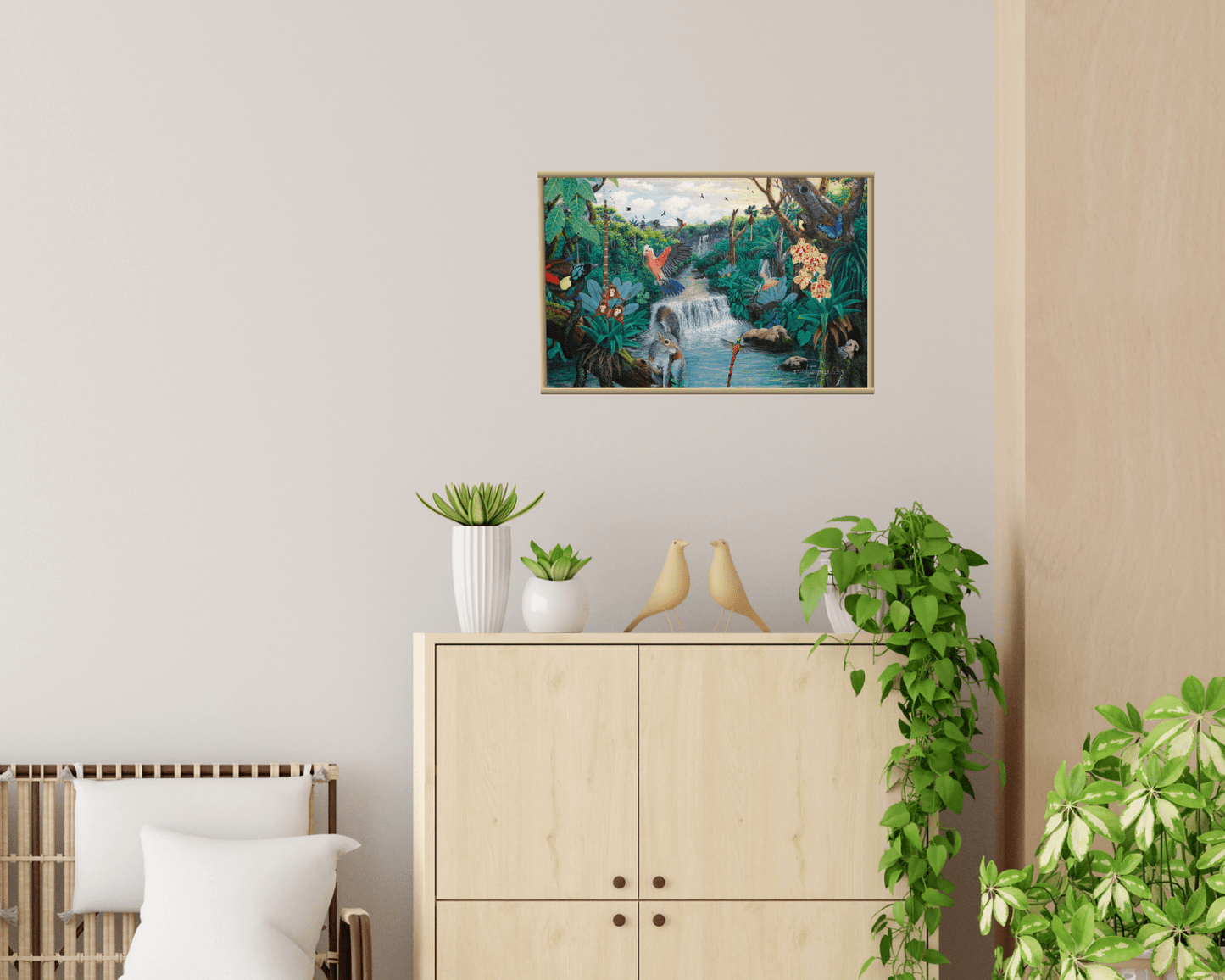My Store
Original, Leather Canvas, "Paradise Along The Amazon" by J. Toaquiza 7.9"x11.8"
Original, Leather Canvas, "Paradise Along The Amazon" by J. Toaquiza 7.9"x11.8"
Couldn't load pickup availability
Paradise Along The Amazon by J. Toaquiza
7.9"x11.8" Acrylic on Canvas
“Paradise Along The Amazon” by J. Toaquiza is an extraordinarily detailed Original Painting that captures the breathtaking biodiversity of the Amazonian rainforest. What makes this piece truly unique is its rare medium: it is meticulously painted on leather canvas, giving the surface a distinct, supple texture and an organic warmth .
The lush tropical landscape is bursting with life, illustrating a pristine jungle setting dominated by a beautiful waterfall and reflective waters. The artist employs vibrant color and narrative detail to showcase exotic flora and fauna, including vivid orchids, a soaring cockatoo, blue butterflies, and playful monkeys. This work is a premier example of Indigenous Folk Art, offering a detailed and heartfelt tribute to the majestic, life-sustaining river ecosystem.
Share




